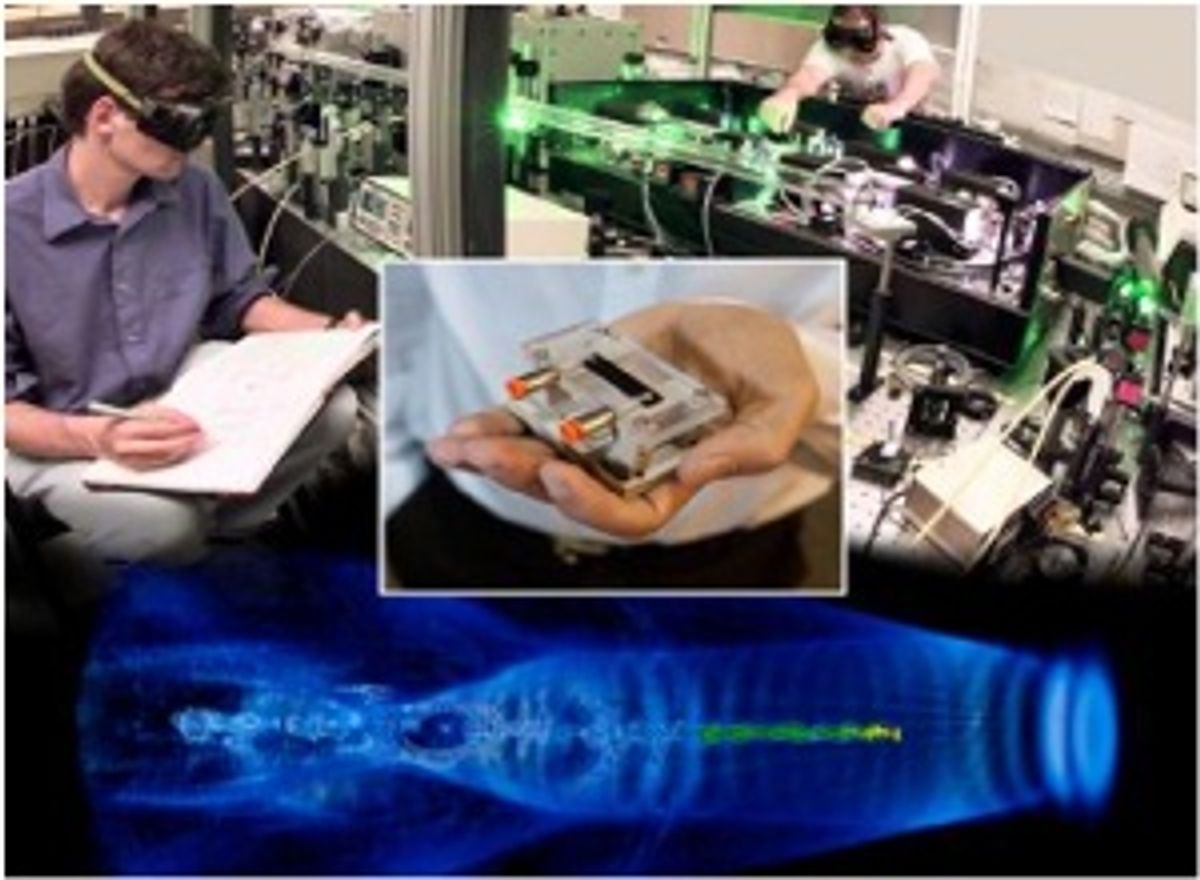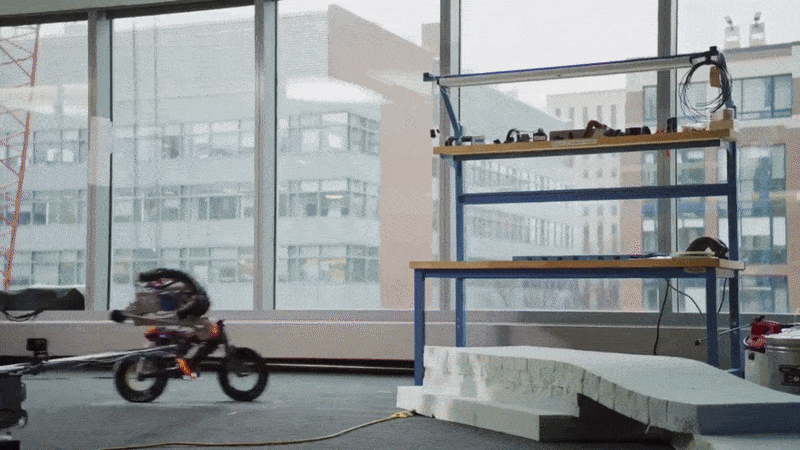Does your table-top laser plasma accelerator (LPA) just sit there, taking up kitchen-counter space next to the unused toaster oven (too big for toast, too small for “oven”)?
Perhaps not. But the utility of LPAs—compact particle accelerators called “table-top” because they are only a few meters long, rather than a few kilometers—has been limited because their output is hard to calibrate. LPAs produce short, intense pulses of synchronized high-energy electrons, or jolts of terahertz, x-ray, or gamma radiation. Their output is around one gigaelectron volt (GeV) or less—about one ten-thousandth of the 7 TeV generated by a Large Hadron Collider main beam crossing, but more than enough to illuminate research into photosynthesis, catalytic chemistry, structural molecular biology, low-temperature superconductors, spintronics, and graphene nanostructures, according to the Lawrence Berkeley National Laboratory (LBNL), which is studying the devices.
Electrons then “surf” (LBNL’s term) down this potential cliff, accelerating to near-light-speed in an instant to follow the laser pulse through the plasma, generating a beam of light and electrons. The result is a concentrated clump—physicists refer to it as a “bunch”—of highly synchronized relativistic electrons predicted to be about 0.1 micrometer in radius. Let’s see: a blob roughly 10-7 meters in radius moving about 300 million meters per second…. Ah, this little bundle of high-octane joy comes and goes in roughly one-third of a back-of-the-envelope femtosecond.
The bunch’s high energy, small dimensions, and short duration make it difficult to measure any of its characteristics directly without disrupting its structure. It is especially difficult to measure the beam’s emittance, its tendency to spread in phase space—the key indicator of how much energy it can deliver to how tightly defined an area. A low-emittance beam will be tightly focused and the particles will have nearly uniform momentum.
The traditional approach is measuring emittance has been the “pepper-pot”—a sieve of small holes that splits the bunch into beamlets whose impacts can be measured individually via a CCD camera. Unfortunately, running the electron beam through the pepper-pot destroys the beam—and possibly the pepper pot apparatus itself.
Now, however, an LBNL research team has hit upon a method for measuring electron-beam emittance without disturbing the electrons themselves.
The key is the background betatron x-ray radiation—radiation that all electrons produce as they accelerate through a plasma. These energetic photons join the electrons and the stimulating laser light in the energy stream pouring out of the LPA. Assigned to evaluate this x-ray background, one LBNL team member, UCLA post-doc Guillaume Plateau, realized that it would be possible to separate these streams and calculate the beam’s emittance from the betatron x-ray pulse.
Plateau, his LBNL colleagues, and collaborators from Germany’s ExtreMe Matter Institute and Jena Helmholtz Institute worked out a method (see diagram). First they used an electron spectrometer to curve the electrons’ path and divert them out of the beam. Next, layers of plastics and beryllium filtered out the laser light, and a two-foot-thick concrete wall filtered out residual radiation, so that the x-ray beam could enter a high-performance CCD camera without destroying it. The camera collected the incoming x-ray photons and recorded their energy and positions.
By fitting the data back to theoretical curves, the LBNL team could confirm the theoretical calculations: the LPA delivers electron bunches 0.1 μm in radius. Combining the x-ray data with electron spectra, they calculated that the electron beam’s emittance is also in accord with the predicted value.
Good, now that I can measure bright and tight my LPA beam will be, I can get it off the kitchen counter and use it to tease the cat. His name, of course, is Schrödinger.
Images: (Top): Photos Roy Kaltschmidt; simulation Cameron Geddes; Lawrence Berkeley National Laboratory. (Bottom) Lawrence Berkeley National Laboratory
Douglas McCormick is a freelance science writer and recovering entrepreneur. He has been chief editor of Nature Biotechnology, Pharmaceutical Technology, and Biotechniques.





